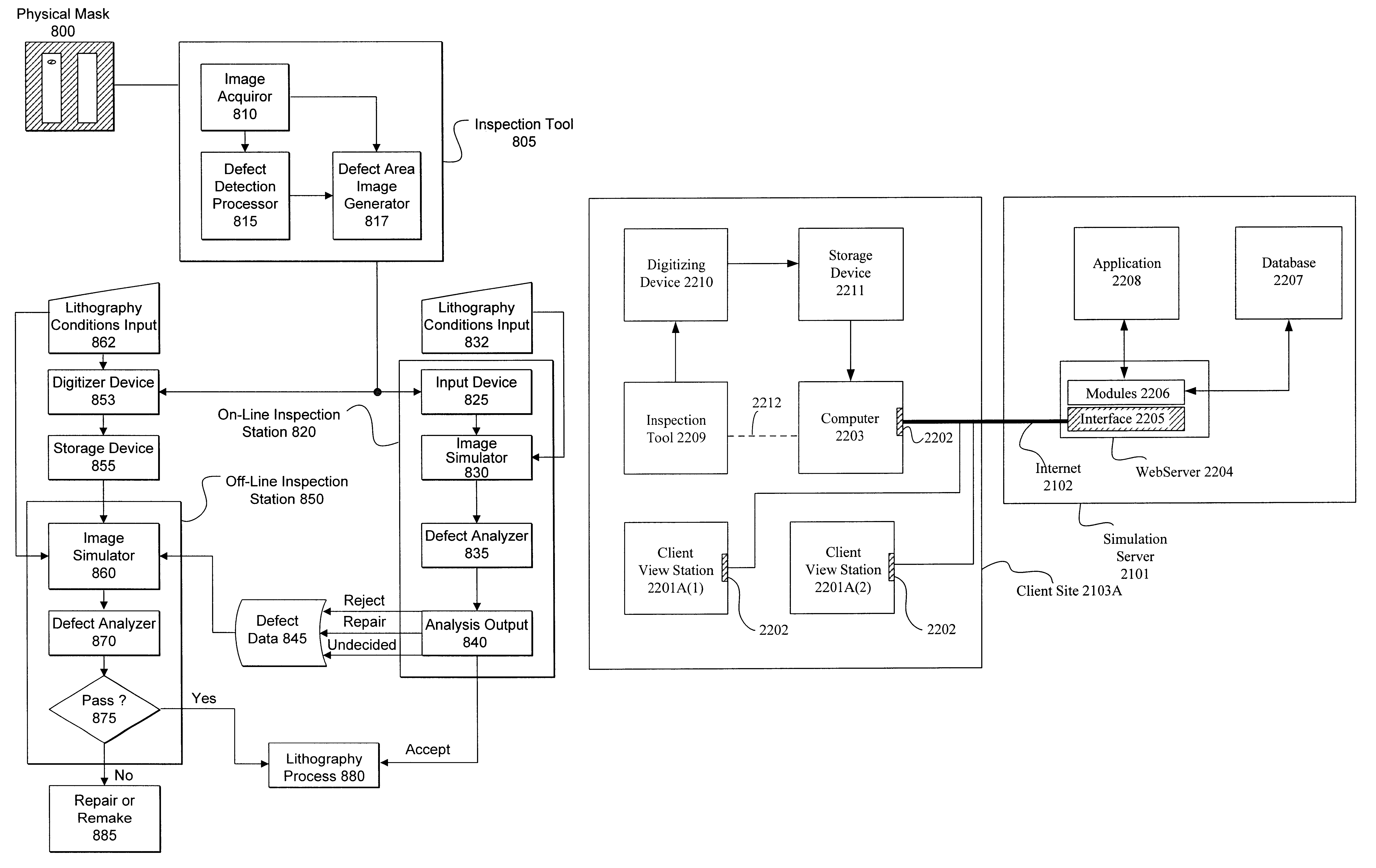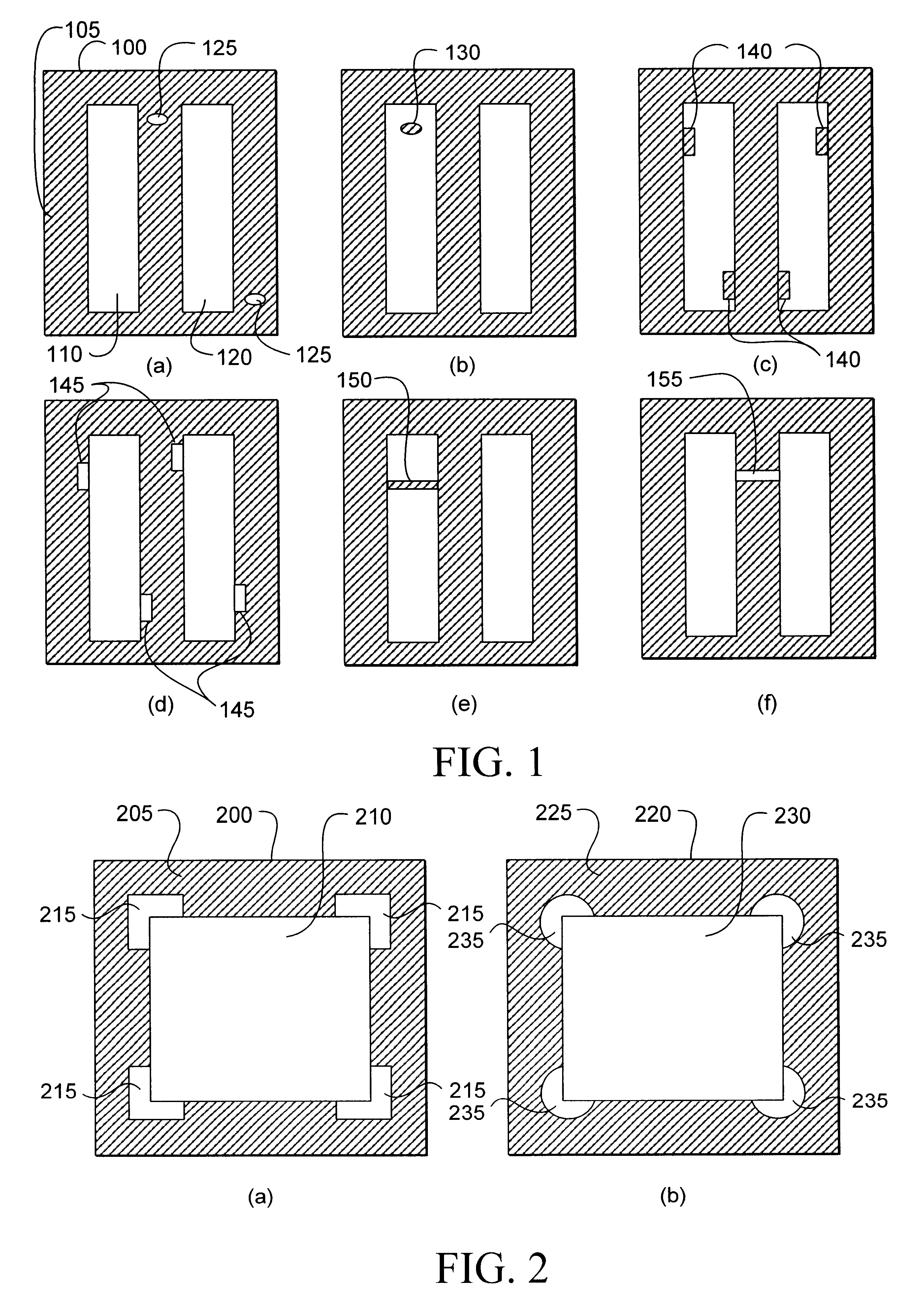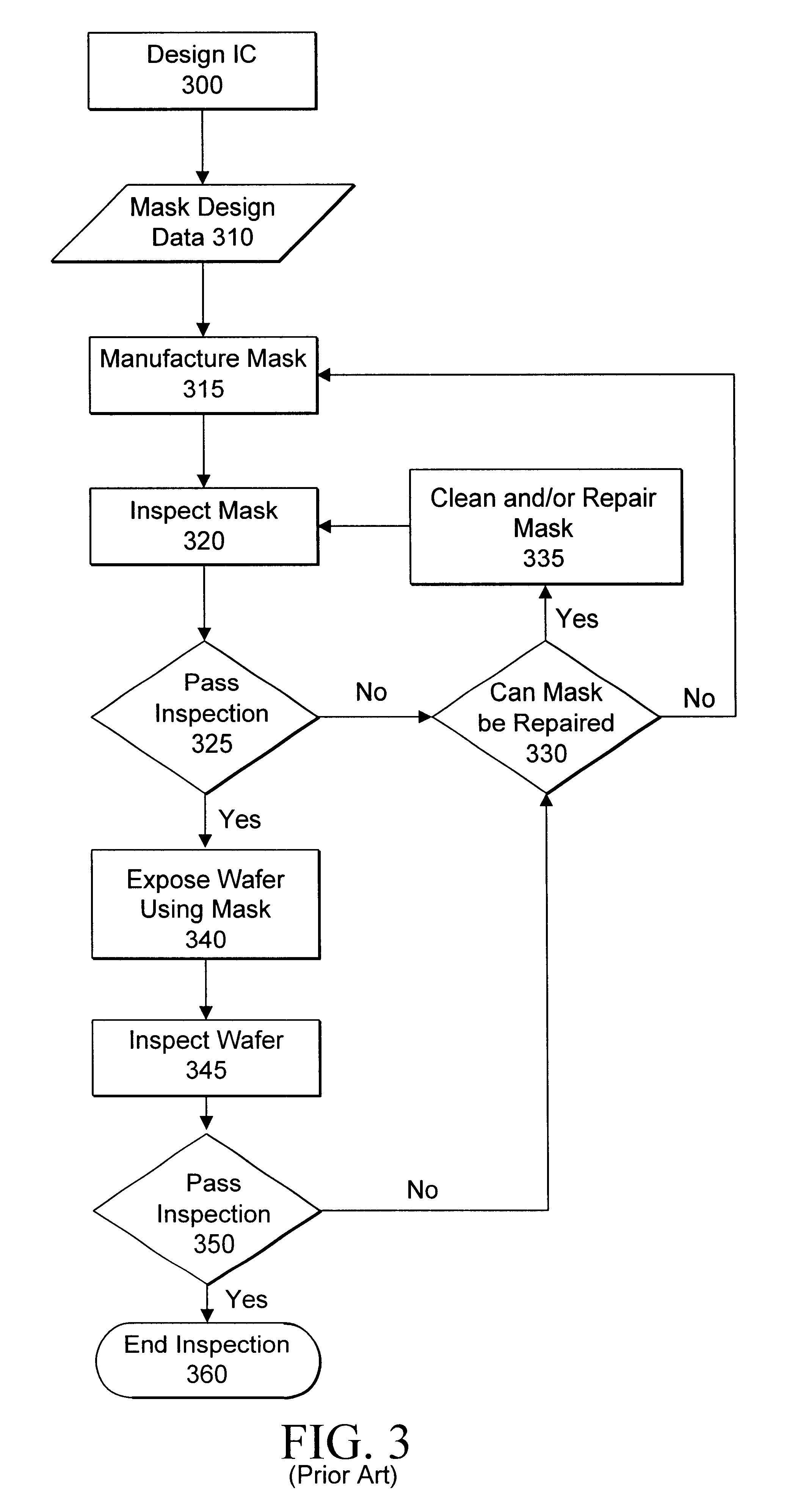Method and apparatus for a network-based mask defect printability analysis system
a network-based mask and printability technology, applied in the field of integrated circuit manufacturing, can solve the problems of not being able to perfectly reproduce the design serif 215 shape on the mask material, mask defects occur outside the controlled process, and are unrealistic to assume, so as to achieve the effect of solving problems and decision-making
- Summary
- Abstract
- Description
- Claims
- Application Information
AI Technical Summary
Benefits of technology
Problems solved by technology
Method used
Image
Examples
Embodiment Construction
Photolithography is a process whose input is a mask and whose output is the printed patterns on a wafer. The printed result from a mask is what design engineers, lithographers, and mask manufacturers really care about. Using prior methods, the only way to inspect this printed result was to perform an actual wafer exposure and therefore incur potentially unnecessary costs in time and money. The present invention solves some of the problems of these prior methods by providing for mask inspection that takes printability into account without the need for the expensive steps of actually exposing a wafer. The present invention is capable of using a captured image of a mask----that accurately enough represents the physical mask (i.e. such as from a high resolution optical microscope or a scanning electron microscope)----and using that captured image to simulate the wafer exposure that the mask would provide under a given set of stepper conditions. Thus, when an initial mask inspection for ...
PUM
| Property | Measurement | Unit |
|---|---|---|
| mask defect analysis | aaaaa | aaaaa |
| area network | aaaaa | aaaaa |
| area | aaaaa | aaaaa |
Abstract
Description
Claims
Application Information
 Login to View More
Login to View More - R&D
- Intellectual Property
- Life Sciences
- Materials
- Tech Scout
- Unparalleled Data Quality
- Higher Quality Content
- 60% Fewer Hallucinations
Browse by: Latest US Patents, China's latest patents, Technical Efficacy Thesaurus, Application Domain, Technology Topic, Popular Technical Reports.
© 2025 PatSnap. All rights reserved.Legal|Privacy policy|Modern Slavery Act Transparency Statement|Sitemap|About US| Contact US: help@patsnap.com



